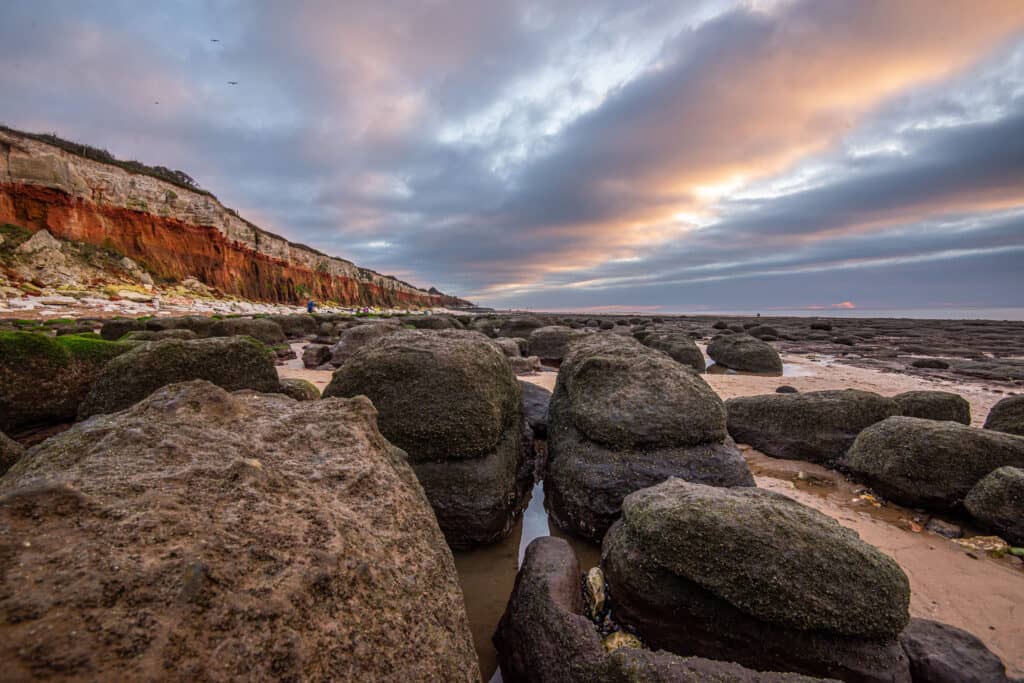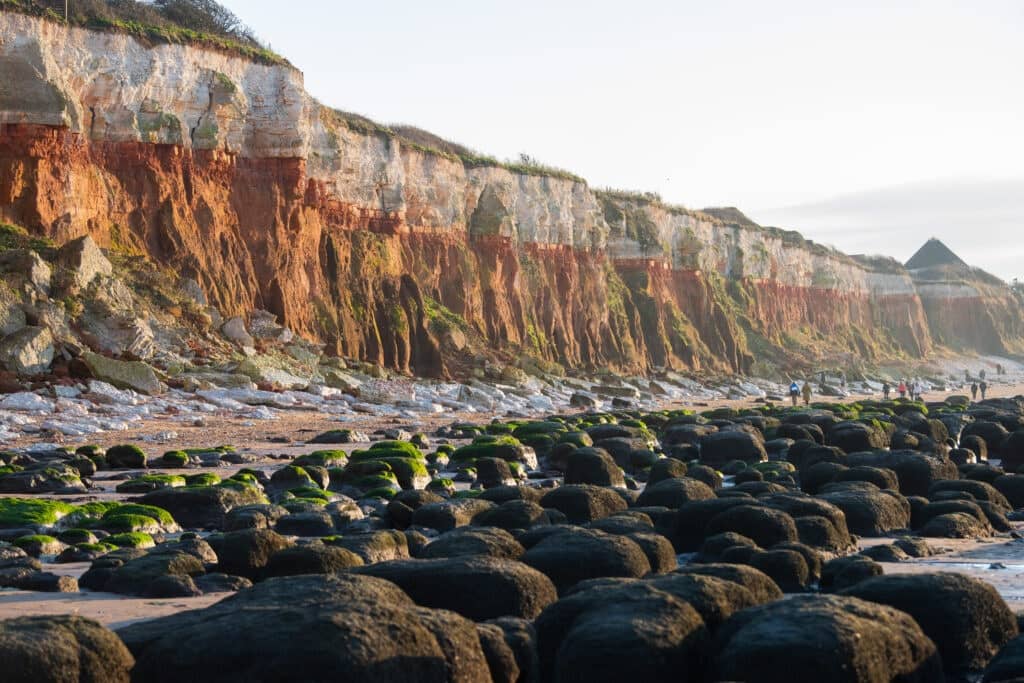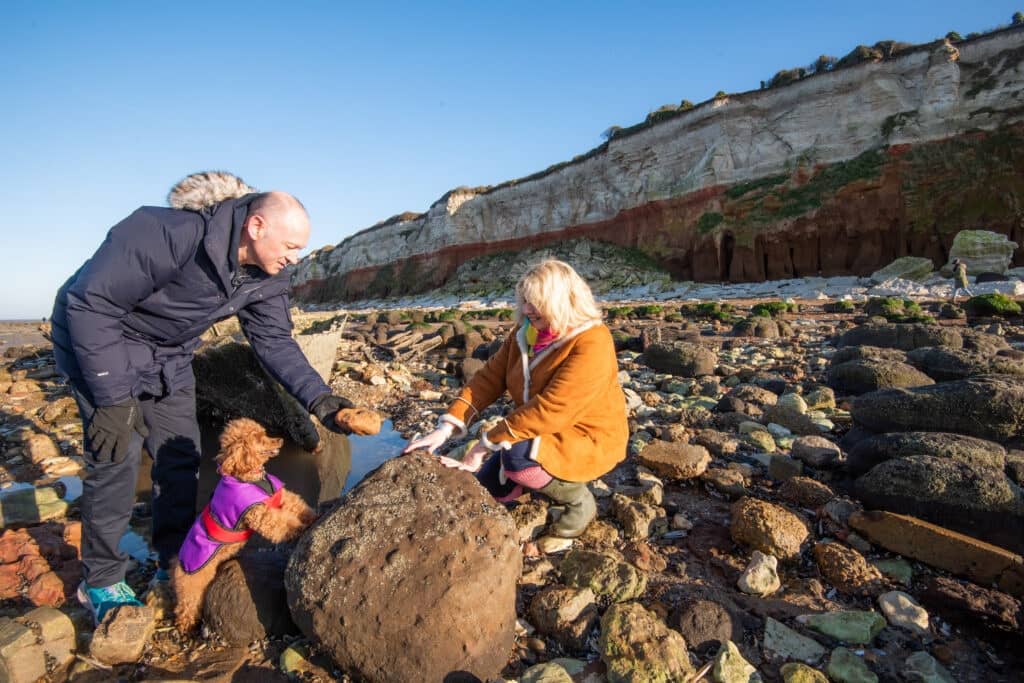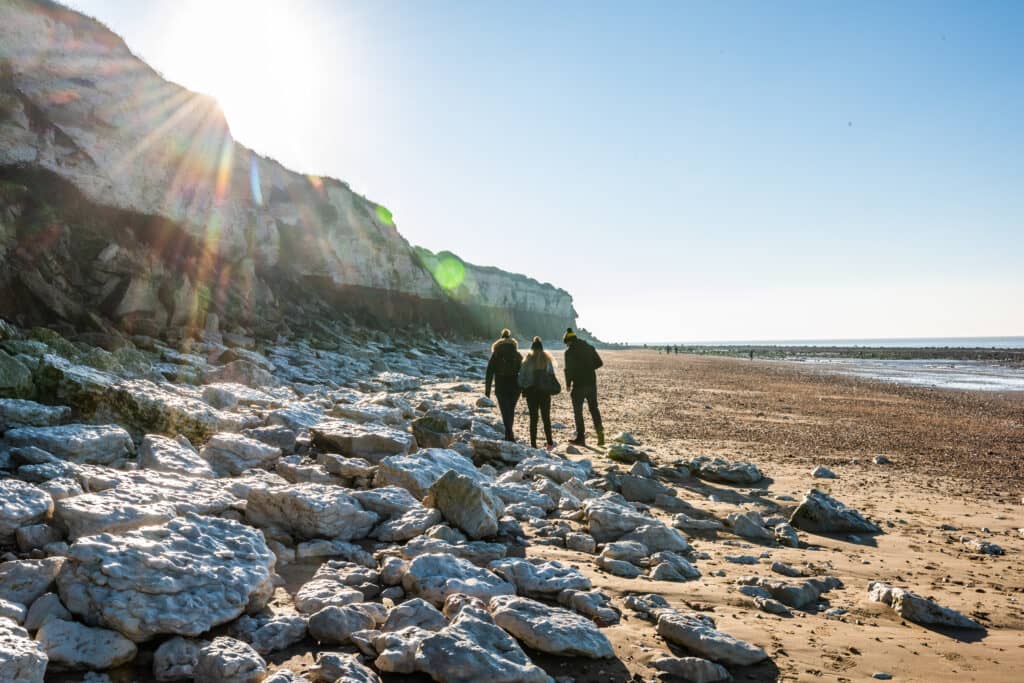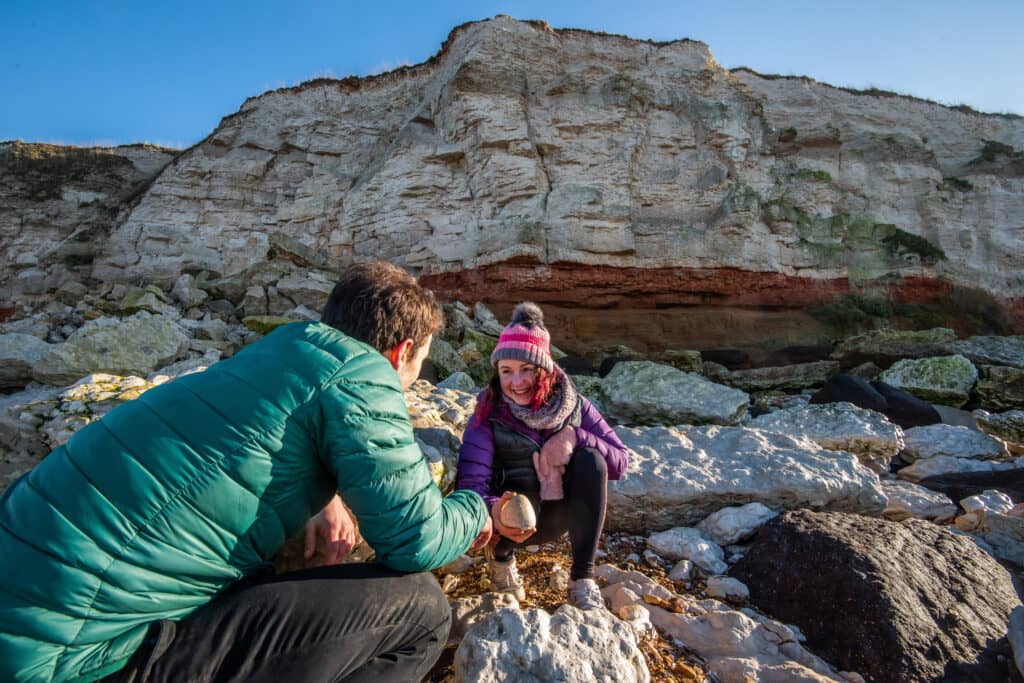Famed for vast beaches and wild saltmarsh, Norfolk has an amazing coastline including a rocky cragwhich is striped like a circus tent.
Hunstanton cliff’s eye-catching bands of red, white and burnt orange sedimentary rock featured in the film ‘Spencer’ (2021). The colours are a joy for photographers, capturing their glowing beauty from this west-facing shore, especially dramatic during stormy sunsets.
A Site of Special Scientific Interest, the stunning stripy cliffs are part of a sweeping chalk ridge that once extended from the Chilterns to Yorkshire. In a fast-paced world, it’s calming to experience their slow majesty, knowing those ancient chalk layers accumulated at the steady rate of one foot every 30,000 years.
Chalk is the remains of organisms which once swam in the warm, tropical Cretaceous sea that covered Norfolk between 135 and 70 million years ago. The bottom layer of red brown carrstone is considered to be c.108 million years old and above it is a broad stratum of red chalk coloured by iron pigments and rich in fossils. Fossil hunters may find coccoliths, bivalves, belemnites and even shark’s teeth. But be careful! The cliffs are fragile and coastal erosion causes large chunks to fall quickly, so walk well clear of their shadow and stay safe.
And if rock fans think these cliffs look familiar, check your Stranglers albums. The punk band used Hunstanton cliffs as the location for the cover shoot of their aptly named ‘Norfolk Coast’ album. It’s official. Hunstanton rocks.
